The cost to add a bathroom varies based on various factors. The national average to add a new standard-sized bathroom with standard facilities is $15,000.
The range to add a new bathroom varies from $5,000 to $35,000, depending on washroom design, fixtures, and labor costs. This guide covers all the features that impact the cost of adding a bathroom to your home.
Per Square Cost: The cost per square foot to add a bathroom can vary widely based on factors like region, materials, and project complexity. You could expect to pay between $100 to $500 per square foot. So, for a 100-square-foot bathroom, you could look at a cost between $10,000 to $50,000. Remember, this is just a ballpark estimate, and prices can vary based on specific project requirements.
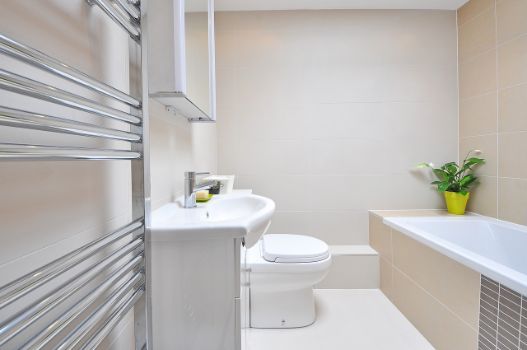
Factors That Affect the Cost to Add a Bathroom
Bathroom Type
The type of bathroom you’re adding can significantly influence the cost. A half-bath with a toilet and sink can cost between $15,000 to $35,000. A three-quarter bathroom, including a sink, toilet, and shower, could range between $25,000 to $50,000. A full bathroom, with all the amenities, including a bathtub, could range from $35,000 to $100,000, particularly for high-end finishes and custom work.
Bathroom Location
The location of the new bathroom in your home can also impact the cost. Adding a bathroom to an existing space like a basement or ground floor might cost around $25,000 to $50,000. However, if you’re adding it to a new addition or an upper level, costs can range between $50,000 and $100,000 due to the complexity of plumbing and structural requirements.
Bathroom Features
Costs can vary based on the features you choose. Basic fixtures might cost around $1,000 to $2,000, while high-end ones can exceed $4,000. In-floor heating might cost between $5 to $10 per square foot, while a luxury feature like a whirlpool tub could cost from $1,000 to $5,000. Technology integration (like smart showers, toilets, etc.) could potentially add thousands of dollars to your bill.
Bathroom Size
Larger bathrooms require more materials and labor, increasing costs. For example, a small 30 to 50-square-foot bathroom might cost $25,000 to $35,000. A medium-sized 70 to 100-square-foot bathroom could range from $40,000 to $60,000. Larger bathrooms of 100+ square feet can cost from $60,000 to $100,000 or more.
Labor Rate
Labor costs can vary widely based on the region, the complexity of the project, and the contractor’s experience. Labor typically represents about 40-60% of the bathroom addition cost. In the U.S., the average plumber might charge between $45 to $200 per hour, and an electrician might charge $50 to $100 per hour. Always obtain multiple quotes and check references to ensure you receive a fair price and quality work.
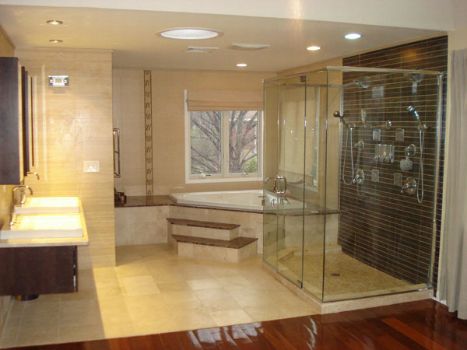
Extra Costs and Considerations
Plumbing & Electrical Work
The plumbing and electrical work’s complexity can significantly impact the cost. If new lines need to be run, plumbing could cost between $500 to $2,000 per fixture. Electrical work can cost $50 to $100 per hour for an electrician’s labor plus materials. Adding outlets, lighting fixtures, or vent fans will add to these costs.
Customizations
Customized features or unique design elements can significantly increase the cost. For example, a custom vanity might cost $2,000 to $5,000, compared to a standard one which could cost around $500 to $2,000. Custom tiling work costs $10 to $20 per square foot, while standard tiles cost $2 to $5 per square foot. Custom shower enclosures could range from $1,500 to $5,000 or more, compared to standard options, which might be around $1,000.
Planning & Drawing
Professional design services are an often overlooked but important part of the cost. Hiring an architect or designer could cost around 10% to 20% of the project cost. For example, if your bathroom addition costs $50,000, you might pay $5,000 to $10,000 for a professional to develop a plan. This cost could increase if there are complex issues to resolve, like structural considerations or challenging site conditions.
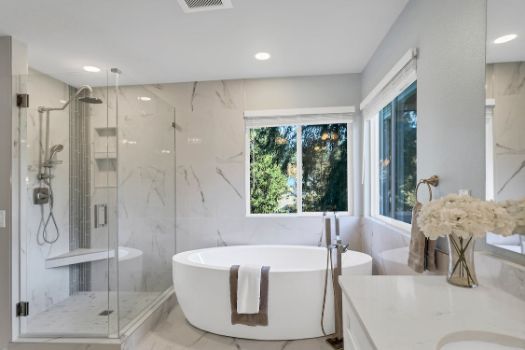
Cost of Adding a Bathroom: Types of Bathrooms
Full Bathroom
Depending on the finishes and size, this type generally costs between $35,000 to $100,000. It includes a sink, toilet, shower, bathtub, and potentially more for high-end fixtures or custom work.
Three-Quarter Bathroom
You can expect costs to range between $25,000 to $50,000. It involves setting up a sink, toilet, and standalone shower, which could be less expensive than a full bath due to the lack of a bathtub.
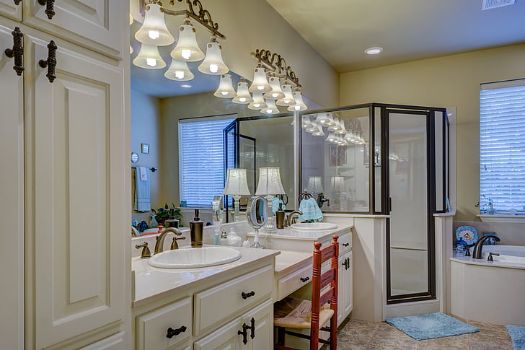
Half Bathroom (Powder Room)
Since it only includes a sink and toilet, it’s less costly, ranging from $15,000 to $35,000. Price can vary depending on the quality of the fixtures and finishes used.
Master Bathroom
This type of bathroom can be a significant investment, typically ranging from $50,000 to $150,000, due to the size, luxury fixtures, and custom work like dual vanities, a large tub, or a separate shower.
Ensuite Bathroom
Similar to a master bathroom in cost, ranging from $40,000 to $100,000 or more, depending on size, features, and finishes. Costs can increase if structural changes are needed to create access from the bedroom.
Jack and Jill’s Bathroom
This type of bathroom can cost between $35,000 to $100,000. The cost is driven by the need to access the bathroom from two different rooms and the quality of fixtures and finishes chosen.
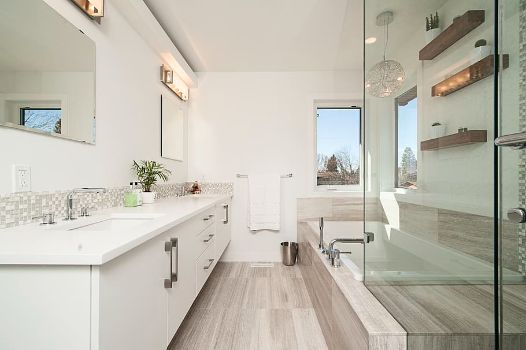
Wet Bathroom
Given the need for extensive waterproofing and drainage solutions, this type can cost from $15,000 to $35,000 or more. The cost also depends on the choice of fixtures and finishes.
Compact Bathroom
Because of its small size, it can range from $15,000 to $35,000. Even though it’s small, high-end materials and fixtures can drive up the cost.
Luxury Bathroom
With high-end fixtures, materials, and potential spa-like features, these bathrooms can range from $100,000 to $200,000 or more. The extras, like heated floors, steam rooms, and high-end stone or tile, make this type more expensive.
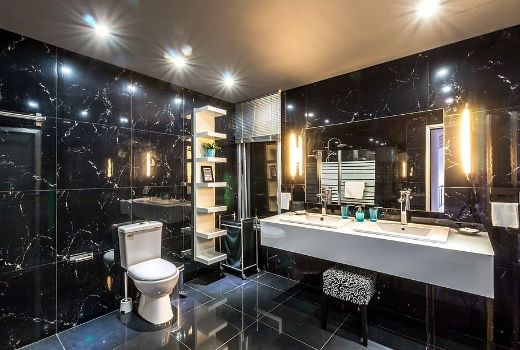
Accessible Bathroom (ADA Compliant)
These can cost anywhere between $30,000 to $100,000 or more. The cost factors include grab bars, wider doors, roll-in showers, accessible toilets, and potentially automated features. The cost increases with the level of customization required to accommodate specific needs.
Benefits vs. Cost of Adding a New Bathroom
Increased Home Value: Adding a bathroom can significantly increase your home’s value. It’s estimated that you can recoup 50-60% of your investment when selling.
Improved Functionality: An extra bathroom can reduce morning rush traffic, making life more convenient, particularly in large families.
Better Guest Accommodation: A new or additional bathroom can enhance guests’ comfort during their stay.
Potential Rental Income: If the new bathroom is part of a fully functional separate space (like a basement), it could be used for rental income.
Costs: Despite these benefits, the cost of adding a new bathroom can be high, ranging from $25,000 to $75,000 or more, depending on the size, location, and finishes. It’s a significant investment and needs careful planning and budgeting.
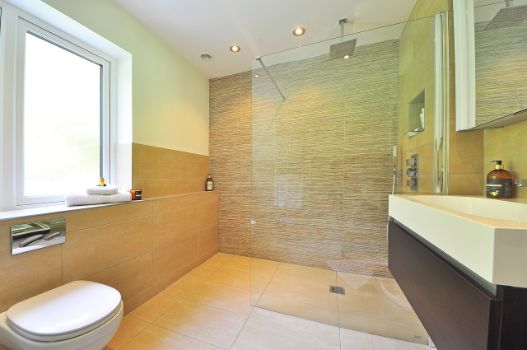
Cost to Add a Bathroom: DIY vs. Professional
Doing it yourself (DIY) can potentially save you money upfront when adding a bathroom, but it also comes with risks. For one, it’s time-consuming and may take significantly longer to complete than if a professional did the work. DIY projects also demand a high level of expertise in plumbing, electrical work, and other specialized skills. If you’re careless, mistakes could cost more than the initial savings.
On the other hand, hiring a professional comes with a higher initial cost but ensures the job is done correctly and promptly. Professionals can also handle any unexpected issues that arise during construction. Furthermore, hiring a professional often means the work is guaranteed, providing peace of mind that if anything goes wrong due to the installation, it can be corrected at no additional cost. While it can be more expensive, the quality and durability of professionally completed work may add more value to your home in the long run.
Questions to Ask from a Professional about Adding a Bathroom
- How long have you been in the bathroom remodeling business?
- Can you provide references from previous bathroom addition projects?
- What is the estimated cost and timeline for this project?
- What does the cost estimate include and not include?
- Are there any potential issues or obstacles you anticipate with this project?
- Will you handle all necessary permits and inspections?
- How much of the work will be done by subcontractors?
- Do you offer a warranty on your work?
- How will changes to the plan be handled, especially if they affect cost and schedule?
- How will daily work operations be handled to minimize disruption in my home?
- What is your payment schedule?
- How will you protect other areas of my home from construction dust and damage?
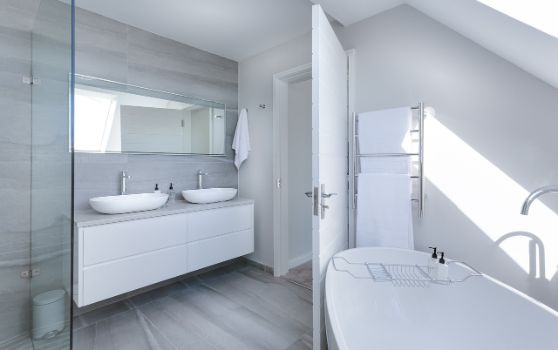
Tips to Save Money while Adding a New Bathroom
- Plan Carefully: A well-thought-out plan can help avoid costly changes midway through the project.
- Do Some Work Yourself: If you have the skills, doing some tasks like painting or tiling can save on labor costs.
- Reuse or Repurpose: If possible, reuse fixtures, cabinets, or other items from your home or salvage yards.
- Shop Around for Materials: Compare various suppliers’ prices for fixtures and materials.
- Choose Standard Fixtures: Luxury items are nice, but standard fixtures can work just as well and cost less.
- Avoid Moving Plumbing If Possible: Keeping new fixtures near existing plumbing can save on labor and materials.
- Consider Long-Term Efficiency: Energy-efficient fixtures might cost more upfront but could save money in the long run.
- Get Multiple Quotes: Getting at least three professional estimates is wise to ensure a competitive price.
- Stick to Your Budget: It’s easy to get carried away, but sticking to your budget can prevent unexpected costs.
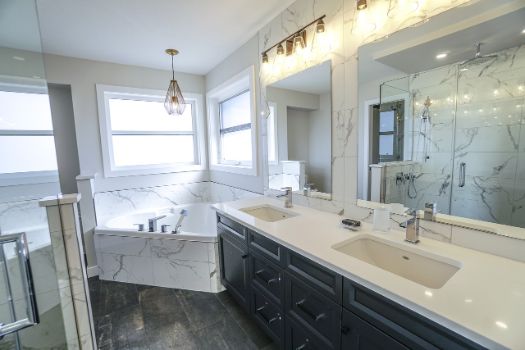
Frequently Asked Questions
What is better: a downstairs or upstairs bathroom?
Both have their benefits. Downstairs bathrooms are more accessible for guests and people with mobility issues. Upstairs bathrooms, usually connected to bedrooms, add convenience, especially in the morning and evening. The decision largely depends on your needs and the current layout of your house.
Should I add a full bath or a half bath?
A full bath can add more value to your home and is beneficial if you have a growing family or frequent guests. However, a half bath is less expensive and can fit in smaller spaces, making it a practical choice when space or budget is limited.
Do I need a permit to add a bathroom to my house?
Yes, generally, you will need a permit to add a bathroom to your house. This ensures that the work is up to code, which is important for safety and resale purposes. You should check with your local permitting office for specifics.
Can I add a bathroom anywhere in my house?
While you can technically add a bathroom in many locations, practicality, plumbing access, and space limitations are crucial considerations. Adding a bathroom near existing plumbing can significantly lower costs.
How much does it cost to convert a closet to a bathroom?
The cost of converting a closet to a bathroom can vary widely but typically ranges from $10,000 to $25,000. This depends on the size of the closet, the accessibility of plumbing, and the finishes are chosen.
How much does it cost to install bathroom flooring?
The cost can range from $3 to $25 per square foot, depending on the material chosen. This includes both the cost of the material and professional installation.
How much does bathroom backsplash cost?
On average, you can expect to pay between $10 and $40 per square foot for a bathroom backsplash, depending on material and installation costs.
How much does it cost to add a bathroom in an RV?
The cost to add a bathroom to an RV can range from $1,000 to $5,000 depending on whether it’s a full or half bath, the size of the RV, and the type of fixtures and finishes used.
Can I add a bathroom in the basement?
Yes, you can add a bathroom in the basement. However, it can be a complex project due to the need for below-grade plumbing, which might involve digging into the concrete slab and installing a special up-flush toilet or a sewage-ejector system. Costs generally range from $10,000 to $25,000 or more.